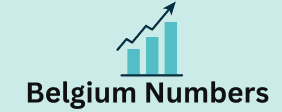[ 11 ]The first volume of the Corpus of Old German Original Documents up to the year 1300 (CAO) was publish by Fririch Wilhelm in 1932. It contain 4,000 pages of over 2,500 documents, transcrib from the originals. [8] The aim of the project was not only to record all surviving German-language documents up to the end of 1299, but also to lexicographically index them using the Dictionary of Middle High German Documentary Language. This has been almost completely achiev, with 4,422 documents and approximately 1.3 million reference tunisia phone number library words. In addition to registers of current and former storage locations, each of the five volumes contains lists of issuers, recipients, and places of issue. [9]
An important aspect of the
CAO was that the texts were not normaliz. be on the textual carrier, and a transcription . A as faithful as possible was to be creat. [10] This practice also continu in metadata fields such as issuer, recipient, etc., as these were taken directly from the text. This represents a significant difference from the LBA holdings and is . A largely due to the different objectives of the two collections. Even after the publication of the first volume of the CAO, historians criticiz precisely this lack of normalization, although it was acknowlg that the traditional approach to itions was insufficient for a corpus primarily dicat to German studies. [11]
Since 2010, the corpus has been digitally
process at the Trier Center for Digital Humanities and made available as a digital text archive. [12] . The working materials of the CAO had been stor for several years at the Institute for Mieval German Philology at the Philipps University of Marburg . A where they were digitiz in collaboration with the LBA for the Marburg Document . Repository: 3,376 digital images of the CAO documents were creat and transferr to the repository. [13] As part of their analysis of linguistic landscape variations in Middle High German search engine optimization unit states america bas on the CAO, Carsten Becker and Oliver Schallert transferr the document holdings into their own relational database structure and enrich it with geographical data. [14] This data also represent an important sme digitalisation toolkit approv source for the inclusion of the pieces in the Marburg Document Repository. As a result, almost 92% of the CAO documents are link to clear places of issue (at the LBA, this number is only 9). %).
